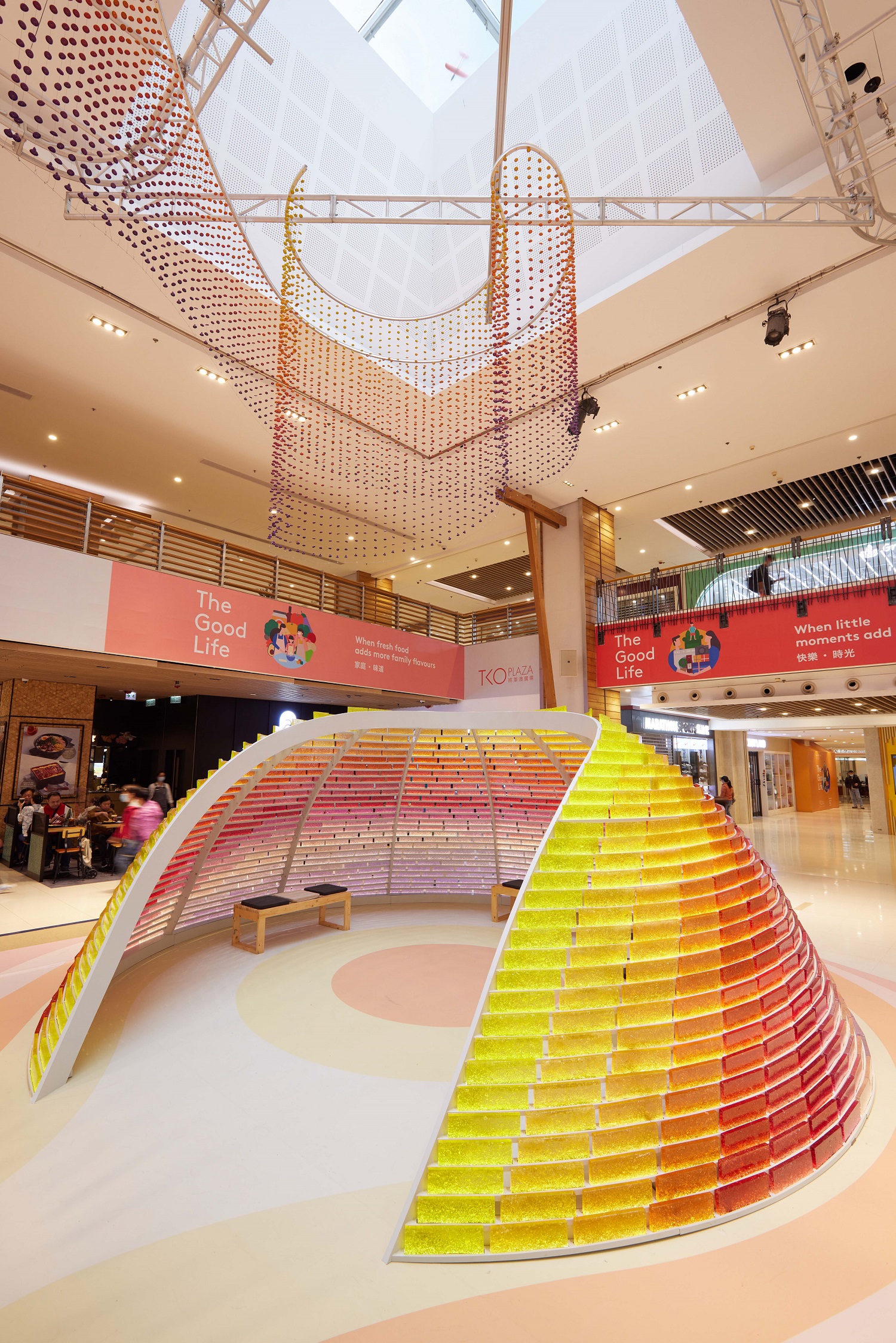Raising environmental awareness through good design
By participating in architectural competitions and exhibitions, three local architects actively explore the possibilities of using renewable glass
Images: Featured architects and TKO Plaza

The convenience of city life means we get everything within easy reach. But on the flip side, we tend to forget to form good recycling habits with our fast-paced lifestyle. Even so, there are a considerable number of people in our community setting good examples in raising environmental awareness. Three local architects: Arnold Wong, Keith Chan and Stephen Ip apply their professional knowledge to upcycle glass bottles through good design.
“User-centric” is a key design principle they adopt. Working in different architectural studios, they put this theory into practice as a team by participating in design competitions and exhibitions. Such experiences allowed them to explore the possibilities of transforming recycled glass into building materials.
Over the years, their participation in design competitions and exhibitions has revealed the technologies and expertise behind the glass recycling industry of Hong Kong. Their recent project at TKO Plaza created further opportunities for upcycling glass bottles into sustainable products.
Their semi-transparent design for the Design Idea Competition for Wanchai Community Green Station in 2017 challenged our perception of waste. “Waste is useless to many of us. But we believe we should give waste a second or even third life,” says Arnold. “Through good design, we could raise awareness for waste reduction.”
This competition inspired them to continue discovering new life cycles for glass bottles. They were surprised by the low recycling rate of glasses through the collaboration with Hong Kong Glass Reborn located in Yuen Long. “Of the hundred tons of glass bottle wastes we make every day, only 10% is recycled,” suggests Keith. This prompted them to actively involve in any design competitions and projects that would convey the message of upcycling glass bottles to the public whenever opportunities arose.
In 2019, their Glass-Recycling Tower presented at UABBHK was a mini version of a glass bottle crushing machine that attracted visitors to take part in one major step of processing recycled glasses. The transparent and participatory design of the machine, yet again, communicated the message of recycling to the public.
The first time they realised the use of recycled glass was exhibiting the Recycled Glass Brick Spiral at deTour 2020. The spiral installation was formed by 400 identical recycled glass bricks, inviting visitors to experience the space created by such material. The architects then expanded their interest in upcycling recycled glasses into reusable products.
This Christmas, they stepped forward to demonstrate recycled glass in a different form at TKO Plaza. The dome–shaped Christmas installation is built with thin, colourfull recycled glass bricks. Splashes of hues were added by mixing resin with the crushed glasses. After the exhibition, the materials employed will be transformed into recycled glass candle holders, giving the third life to recycled glass bottles.
Looking back to past experiences, all their achievements are the result of great collaborations with various parties. The success of creating the Christmas installation with advanced technology has exceeded their expectations. “75% of the recycled glass brick is made of eco-material,” suggests Arnold. They are now exploring possibilities to use recycled glass bricks as façade for buildings and glass screens for interior space in the future.
Creating a livable future is not only the responsibility of some major stakeholders but everyone in society. The architects believe what they have been doing is a bottom-up method which is less effective than any top-down policies that would be implemented by the government.
“We are quite behind in terms of glass bottles recycling compared to other cities. Our awareness towards the issue is inadequate whilst the cost is high and return is low for glass recycled manufacturers,” worries Keith. “However, the global village belongs to every one of us. We should not leave this issue in the hands of a few. We don’t have to live like an eco-fighter but we should do our best to reduce wastes.”
Teach children to heal the earth
There is no time to delay for parents to teach their kids the importance of protecting the environment
Architect Stephen Ip is a father of three children. In educating his kids in caring for our environment, he puts his words into action: “My kids are six, four and two years old. The oldest and the second-born have already taken part in classifying wastes at home. Every weekend, we will bring the wastes to the collection points at our housing estate. This has become an important agenda of our daily life.”
For Stephen, the first step of educating his kids is through participation. “Although it is unlikely for our generation to see the earth meeting its ultimate end, there are many predictions about catastrophic wildfires and abnormal climate change will be happened by the end of the 21st century. When you become a parent, you want to do more to build a livable environment for the sake of our children.”
This summer, he and his family made a remarkable achievement – no air-conditioning at night. “It wasn’t easy to sleep in the heat, but we made it as we attempted and insisted to.”
Share